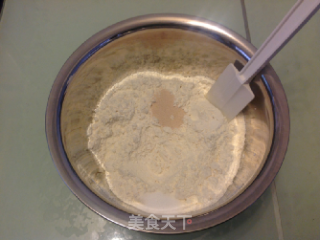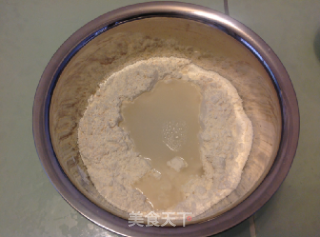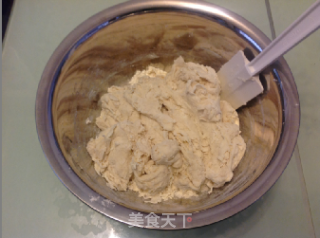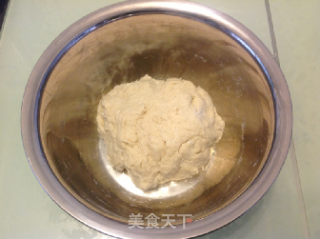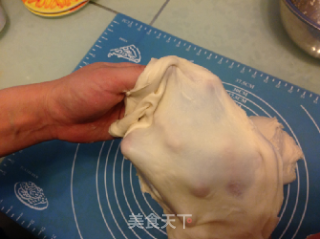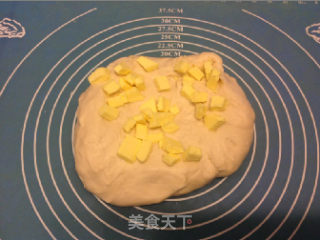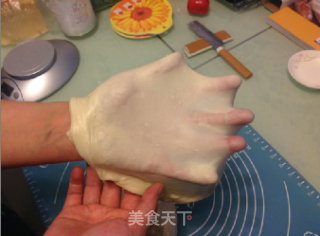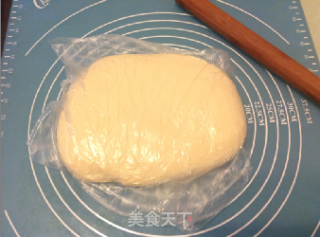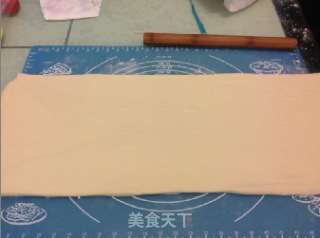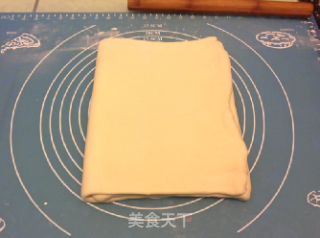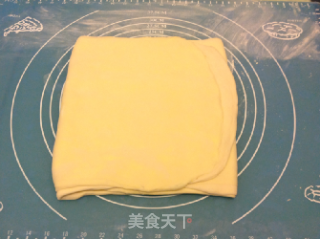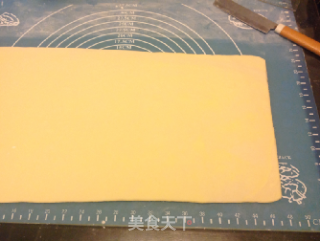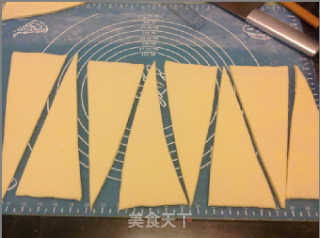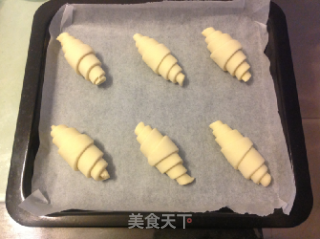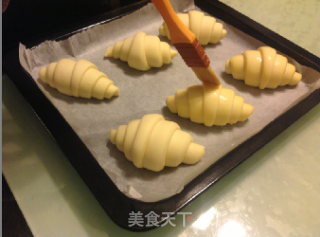Croissant
1.
Mix all the flour materials in the dough. Note that the salt and yeast should be separated on both sides
2.
Dig a hole in the flour pile and pour water.
3.
Use a spatula to mix the flour and water into a floc.
4.
Combine the noodles with your hands.
5.
Knead by hand until a thicker film appears (expansion stage).
6.
Add butter.
7.
Continue to knead the dough until a large glove-like film that is not easy to break appears (complete stage).
8.
Use a rolling pin to roll the dough into a flat oval shape, put it in a fresh-keeping bag, and put it in the refrigerator for 30 minutes.
9.
Slightly soften the butter and slice it, spread it on the plastic wrap, cover the front and back sides with the plastic wrap, and roll it into a square with a rolling pin.
10.
Sprinkle high-gluten flour on the chopping board to prevent stickiness. Take out the frozen dough and roll it into a square about twice the size of the butter slice. Put the butter slice in the middle.
11.
Fold the four corners of the dough to the middle and pinch tightly.
12.
Roll out the dough.
13.
Fold the left and right 1/3 of the dough inward, and the dough will be folded in three.
14.
Repeat steps 12 and 13 to complete another three-fold, put the dough in a fresh-keeping bag, put it in the refrigerator for 30 minutes, and repeat steps 12 and 13 again to complete the third three-fold. Wrap the dough in plastic wrap and refrigerate for 30 minutes.
15.
Take out the refrigerated dough and roll the dough into a dough sheet with a width of 21 cm and a thickness of about 0.4 cm. Cut off the irregular corners.
16.
Cut the rolled dough sheet into an isosceles triangle with a base width of 9.5 cm and a height of 21 cm.
17.
Roll up the triangular dough from the bottom into a horn shape.
18.
The rolled dough is placed on a baking sheet covered with greased paper, and the final fermentation is carried out at room temperature.
19.
After the final fermentation, the surface is brushed with whole egg liquid.
20.
Preheat the oven at 220 degrees, middle level, upper and lower fire, and bake for 20 minutes.
21.
After letting cool, put it in a fresh-keeping bag and keep it sealed.


Tips:
1. This time the layering of the croissant is not very good. Looking at the information, it is found that the croissant needs to be quickly roasted at a high temperature to expand in a short period of time, resulting in honeycomb tissue, so the first 10 minutes must be high in temperature. In order to color evenly, cool down and bake slowly for the next 15 minutes. Learn from next time.
2. The croissant dough cannot be fermented in a bread machine or an oven with a higher low temperature zone, otherwise the butter will flow out and it will fall short.
3. The information obtained from the Internet will be used for reference next time: croissants generally need to wipe the egg liquid twice, before the second fermentation and before entering the oven. Wiping egg liquid before the second fermentation also has a moisturizing effect. Household fermentation tanks usually cannot guarantee humidity. If the egg liquid is wiped first, the humidity requirements are not high.
4. Use the information obtained from the Internet for reference next time: Remember to "do not fold in excess dough" every time you fold, and the side of the dough that is hidden in the crease inside the dough must first be cut off to reveal the layers. Although the Ke Song organization emphasizes levels, it is not that the more levels the better, so it is not that the more folds the better. If you fold too much, the butter between each layer will be thin, and the chance of mixing will increase. Even if it is not mixed, each honeycomb will be relatively small.


